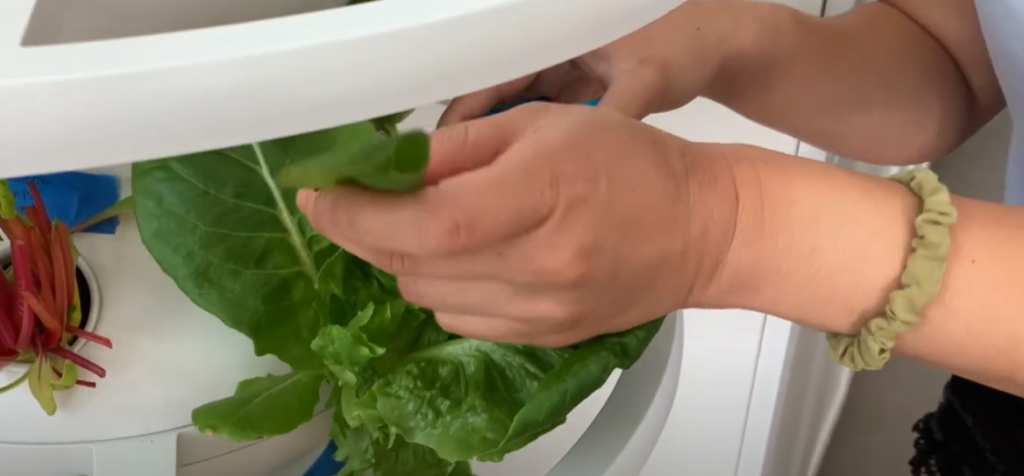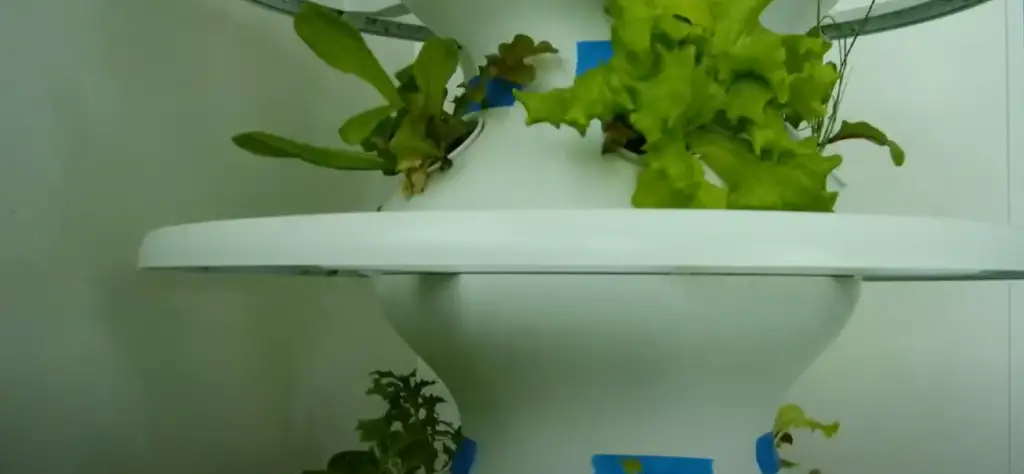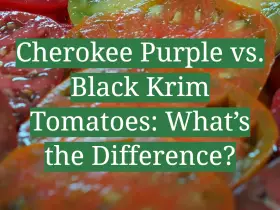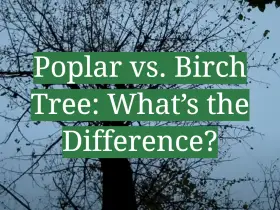There are many different types of gardens that you can choose from when you are trying to grow your fruits and vegetables. Two of the most popular types of gardens are the lettuce grow garden and the tower garden. So, which one is better? This guide will compare the two types of gardens and help you decide which one is right for you!
Tower Garden Vs. Lettuce Grow
Business Model & Brief History
Tower Garden is a company that was created in 2002 by Tim Blank, a retired US Navy Commander. They aim to revolutionize the way we grow plants and vegetables, helping people to save money while reducing their environmental footprint. They use an aeroponic tower growing system that allows you to grow food up to 12x faster than soil-based gardening with 98% less water, no weeds, and a chemical-free environment.
Lettuce Grow, on the other hand, is a Canadian startup founded in 2016 by two entrepreneurs whose mission is to make urban farming simple, affordable, and accessible for everyone. They use modular hydroponic systems with automated controls and watering systems so that it’s easy for anyone with limited space or knowledge to grow their own food.

Design and Size
Tower Garden is a vertical growing system that has a height of around 3 feet and can support up to 20 plants. It’s designed with its own nutrient delivery system, which means you don’t have to manually add fertilizer or water the plants. The tower comes in different models, ranging from small to large depending on your needs.
Lettuce Grow also offers modular hydroponic systems but with more flexibility; you can choose between three sizes (small, medium, and large) and build custom configurations of up to 16 towers per system. Each tower is 1 foot wide by 4 feet tall, allowing for maximum growth potential while still fitting in smaller spaces like balconies or patios. Additionally, each system includes an automated control system and a nutrient delivery system.
Seeds vs. Seedlings
Tower Garden uses seeds to grow plants while Lettuce Grow uses seedlings. This means that when you buy a Tower Garden you need to wait for the seeds to germinate, which takes about 7-10 days. With Lettuce Grow, the seedlings are already established so you can start growing food right away.
Nutrients
Tower Garden uses an organic nutrient solution, which is a blend of liquid fertilizers and minerals. The nutrients are delivered directly to the roots of the plants through the tower’s integrated delivery system. Lettuce Grow also uses an organic nutrient solution but they offer a few more options. You can choose between two formulas: one for seedlings and one for mature plants. Additionally, you have the option to mix and match different types of nutrients to customize your plant’s nutrition needs.
Grow Medium
Tower Garden uses a coco coir and perlite mix as their growing medium. This mixture helps to retain moisture and provides support for the plant’s roots. Lettuce Grow also uses a coco coir and perlite blend, but they also offer rock wool cubes as an additional option. Rockwool is an inert material made from melted basaltic rocks that provide excellent insulation while still allowing air and water to reach the roots of the plants.
Organic?
Tower Garden is not certified organic, but they do use organic nutrient solutions and an all-natural coco coir and perlite mix. They also focus on providing non-GMO seeds. Lettuce Grow is also not certified organic, but they do offer USDA-approved organic nutrient formulas so you can grow your food with peace of mind. Additionally, Lettuce Grow only uses non-GMO seedlings for each of their systems.

Lighting Comparison
Tower Garden offers two different lighting options. The standard model comes with an LED light that provides 16 hours of light per day and the advanced model has a combination of LED and fluorescent lights that provide up to 24 hours of illumination. Lettuce Grow also uses LED grow lights but their systems come with adjustable timers so you can control the amount of light your plants receive. This allows you to adjust the settings depending on your plants’ needs, giving you more customization when it comes to growing your food.
Mobile Apps Comparison
Tower Garden has an app that allows you to monitor and manage your system from anywhere. The app can track the temperature, nutrient levels, and moisture of your plants as well as provide watering reminders and notifications when it’s time to add more fertilizer or other nutrients. Lettuce Grow also has an app that allows you to monitor air temperature, humidity levels, light intensity, and nutrient levels for each of your towers. Additionally, the app provides a variety of growing tips and helpful advice so you can learn how to get the most out of your hydroponic system. Both Tower Garden and Lettuce Grow offer great solutions for those looking to grow their own food in a small space [1].
Pricing
Tower Garden offers 3 different starter kits, ranging in price from $399 to $699. The smaller starter kit is ideal for beginners while the larger one includes more accessories such as a grow light and additional towers. Lettuce Grow’s pricing varies depending on the size of the hydroponic system you choose; their smallest system starts at $299 while their largest one can cost up to $899. They also offer discounts for bulk orders and a monthly subscription plan for those who want to get started with urban farming without a large upfront investment.
Accessories Comparison for Lettuce Grow and Tower Garden
Indoor Lights
Both Lettuce Grow and Tower Garden offer a wide range of indoor lights to suit any grower’s needs. The best option for you will depend on the space available and what type of plants you intend to grow. Lettuce Grow offers both LED and Fluorescent Indoor lights, which are great for growing herbs and vegetables indoors. These lights provide plenty of light while remaining energy-efficient, so they won’t break the bank in terms of electricity costs.
Tower Garden also offers LED and Fluorescent Indoor Lights that are perfect for smaller spaces or those seeking an efficient way to grow their food indoors. One advantage that Tower Gardens has over Lettuce Grow is its vertical orientation, which allows you to save more space while still providing the necessary light for your plants.

Pumps and Watering Systems
Both Lettuces Grow and Tower Gardens offer pumps and watering systems that will make it easier to keep your plants watered and healthy. Lettuce Grow’s automated watering system can be set up to water your plants at specific times of the day or even on a schedule that fits into your lifestyle. This is great for those who aren’t always around when they need to water their plants.
Tower Garden offers an Aquaculture system, which uses aeration and circulation pumps to provide oxygen-rich water directly to the roots of the plants. This makes it easy for them to absorb the necessary nutrients and water they need to thrive.
Dolly Carts
Lettuce Grow offers a selection of dolly carts to help you easily move your indoor garden from one location to another. These carts come in several different sizes, depending on how many plants you are growing and the size of your space. Tower Garden also has a selection of dolly carts that are perfect for transporting your vertical garden from one area to another. These carts can support up to 250 pounds, so they can easily handle any large gardens you might have.
Growing Clips
Both Lettuce Grow and Tower Garden offer growing clips to help you easily manage your plants as they grow. Lettuce Grow’s clips come in a variety of sizes and colors, so you can find the perfect fit for your garden. The clips attach securely to the sides or top of each pot and provide support for your plants as they grow. Tower Garden also has a selection of growing clips that are great for keeping your vertical garden neat and organized. These clips come in various sizes, allowing you to tailor them to meet the needs of your specific setup.
Trellis and Supports
Both Lettuce Grow and Tower Garden offer trellises and supports to help you maximize your space. Lettuce Grow’s trellis systems are great for growing vines, while the vertical support systems can accommodate larger plants such as tomatoes or cucumbers. Tower Garden also has a selection of trellises and supports to help you make the most out of your vertical garden. The supports are adjustable for different types of plants, so you can customize them as needed.

Lettuce Grow Pros and Cons
When it comes to growing your own lettuce, there are both pros and cons. Here’s a look at some of the major things to consider:
Pros:
- Growing your own lettuce is incredibly cost-effective. It costs much less than buying pre-grown or at the store, as you don’t need to pay for soil, fertilizer, water, or other supplies.
- Homegrown lettuce is fresher and more nutritious than most store-bought varieties. The product is not exposed to chemicals used in commercial production so you can be sure that you’re consuming safe food.
- Lettuce is relatively easy to grow while requiring minimal maintenance. If planted correctly, you will have an abundant harvest with minimal effort.
- Growing your own lettuce can be a fun and rewarding experience. You can see the entire growing process from start to finish and take pride in the healthy food you’re producing.
Cons:
- Lettuce takes up quite a bit of space when planted in large quantities. You may need to plan out where you will place your plants to ensure they have enough room to grow properly.
- The harvest season for lettuce is relatively short, so you may not get a consistent crop throughout the year unless you plant multiple batches at different times.
- There is always some risk involved when growing any type of plant, as pests or diseases could damage or kill your crop before it reaches maturity.
- Lettuce requires consistent watering, so you may need to set aside time each day or week to ensure your plants have enough water.
Tower Garden Pros and Cons
Pros:
- Tower Garden is great for small or limited outdoor space since it takes up much less space than traditional soil-based gardening and allows you to grow more food in a smaller area.
- The vertical design of the Tower Garden makes maintenance easy and eliminates the need for weeding, tilling, and other labor-intensive garden tasks.
- It does not require any soil, which reduces the risk of soil-borne diseases, weed seeds, and parasites entering your garden.
- It is well suited for organic growing methods since there are no synthetic chemicals used in its production process or ingredients in its nutrient solution formulations.
- Since the system is self-watering and has an aeroponic misting system, it uses less water than traditional soil-based gardening methods.
- Tower Garden produces high yields in a short amount of time, allowing you to maximize the harvest potential of your garden with minimal effort.
Cons:
- The initial setup cost for the Tower Garden is quite expensive and may be prohibitive for some people.
- It requires a constant supply of electricity and nutrient solution, which can add to running costs over time.
- Since the system is self-contained and closed off from outside air, pests or diseases that would not normally affect plants grown in soil can thrive within the walls of the tower if left unchecked.
- Plants can suffer from nutrient deficiencies if the solution is not regularly tested and adjusted.
- If a malfunction occurs, there is no way to fix it without replacing a part, which can be costly and time-consuming.

Set-Up and Maintenance of Tower Garden and Lettuce Grow Towers
To get started with your Tower Garden or Lettuce Grow Tower, you will need to assemble the tower and prep it for planting. Then, you’ll need to learn about how to maintain these towers, such as ensuring adequate water supply, providing appropriate nutrients, dealing with pest control, and harvesting the produce.
- Assembly: Assembling a Tower Garden or Lettuce Grow Tower is a straightforward process that generally takes less than an hour. Depending on the model you have purchased, assembly instructions are typically included in the packaging and available online.
- Water Supply: Frequent watering is essential for the optimal growth of plants in both towers; however, each one requires different methods of water management. For the Tower Garden, a reservoir should be filled with nutrient-enriched water and then connected to the tower’s pump. The Lettuce Grow Tower, on the other hand, is equipped with an automated irrigation system that pumps water from the bottom of the tower to its top.
- Nutrients: Both towers require fertilizing for optimal growth. The Tower Garden uses a liquid fertilizer that should be mixed into its reservoir every two weeks or so; the Lettuce Grow Tower utilizes specially designed pouches placed in each planter hole along with the soil.
- Pest Control: Pests can be an issue when growing plants in both towers and must be addressed if they arise. Natural remedies such as insecticidal soap, neem oil, and beneficial insects may be employed to keep pest populations in check.
- Harvesting: When the product is ready for harvest, simply pluck the fruits or vegetables from their respective towers; depending on plant variety and environmental factors, some crops may take longer than others to reach maturity [2].
FAQ
Which is better lettuce grown tower or Gardyn?
The answer to this question will depend on your needs and preferences. Both lettuce grown towers and Gardyn systems offer advantages for growing healthy, nutrient-rich lettuce. Tower systems are generally easier to install and maintain since they don’t require a lot of soil or space. They also take up less room in general than Gardyns do, making them ideal for smaller gardens or patios. The downside is that they can be more expensive upfront and only allow you to grow vertical crops like lettuce, herbs, and other small plants. Gardyn systems use soil-based hydroponic technology to create an optimal environment for plant growth without the need for soil or mess.
Can you grow lettuce in a Tower Garden?
Yes, lettuce is one of the most popular crops grown in Tower Gardens. They are easy to maintain, require very little space, and can yield an abundance of fresh produce with proper care. The nutrient-rich hydroponic solution supports healthy plant growth, making it easier for you to get quality lettuce without soil or mess. With a Tower Garden, you can grow a variety of different lettuces including butterhead, romaine, and leaf varieties like oakleaf and green leaf. Additionally, many other vegetables such as tomatoes, peppers, and cucumbers can be successfully grown in a Tower Garden.
Is Tower Garden expensive?
Tower Gardens vary in price depending on the size and features you choose. Generally speaking, they are more expensive than traditional growing systems but offer greater convenience, portability, and yield. The upfront cost may be higher than other options, but you’ll save money in the long run by avoiding soil costs and maintenance expenses. Additionally, many Tower Garden owners find that their yields are much higher than traditional gardens due to the hydroponic technology and optimized environment. This can make up for the initial expense over time.
Useful Video: Lettuce Grow Farmstand Review: The Mars Garden!
Conclusion
The lettuce grow garden and the tower garden are two great options for people who want to grow their food. Both systems provide a convenient and efficient way of growing produce, with the lettuce grow garden being more economical and the tower garden being more aesthetically pleasing. Ultimately, it is up to each individual to decide which system best fits their needs for growing fresh fruits and vegetables. With either option, however, everyone can enjoy the satisfaction of having planted, grown, and harvested their very own homegrown produce.
References:
- https://themodernmindfulmom.com/juice-plus-tower-garden-vs-lettuce-grow-farmstand-in-depth-comparison/
- https://smartgardenhome.com/lettuce-grow-vs-tower-garden/










Leave a Reply
View Comments